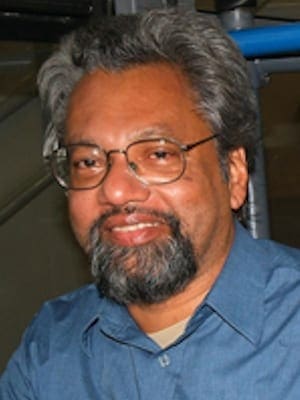I return to Ha-Joon Chang’s debunking “23 Things They Don’t Tell You About Capitalism.”
In one of his chapters, Chang argues that people in poor countries are generally more entrepreneurial than those in rich countries. Most citizens of rich countries work for a company, doing highly specialized jobs.
As a result, they spend their working lives implementing somebody else’s entrepreneurial vision, and not their own.
According to an OECD study, in most developing countries 30 percent to 50 percent of the non-agricultural workforce is self-employed (the ratio tends to be even higher in agriculture).
In some of the poorest countries, the ratio of people working as one-person entrepreneurs can be way above that: 66.9 percent in Ghana, 75.4 percent in Bangladesh and a staggering 88.7 percent in Benin.
In contrast, only 12.8 percent of the non-agricultural workforce in developed countries is self-employed.
For developing-country entrepreneurs, however, things go wrong all the time: power cuts, delivery delays due to bureaucratic red tape, bribery and transport breakdowns.
Coping with all these obstacles, Chang observes, requires agile thinking and improvisation.
An average American businessman would not last a week if he had to manage a small company in Maputo or Phnom Penh. Why then do these entrepreneurs remain poor?
Recognizing the entrepreneurial energy of the poor has led many secular and Christian nongovernmental organizations to leap on the “micro-credit bandwagon” in the past couple of decades.
The main idea behind micro-credit is that the poor lack the necessary capital to realize their entrepreneurial potential.
Regular banks ignore them and local money sharks charge exorbitant interest on loans.
Enter the micro-credit (or, more broadly, the microfinance) industry, which gives poor people, especially poor women, small loans at reasonable interest rates to set up a food stall, buy a mobile phone to rent calls or buy a cow or chickens and sell their produce.
This was seen as the magic formula to end poverty. It proved immensely popular among American donor agencies, who saw it as a way of making every poor person a capitalist, no longer depending on government handouts.
Governments, in turn, could simply forget the poor and leave their welfare in the hands of foreign and local development agencies who would distribute microcredit loans far and wide.
The popularity of micro-credit reached fever pitch in 2005, which the U.N. declared the International Year of Microcredit. The following year Muhammad Yunus and his Grameen Bank in Bangladesh, widely hailed as the pioneers of microcredit, received the Nobel Peace Prize.
Unfortunately, the cracks in the micro-credit industry began to appear before this. And they have widened.
Several books have questioned the claims that microfinance has significantly improved the lives of its clients. The problems are too numerous to mention.
But just consider the woman who initially makes good money by renting out a mobile phone in her village. As soon as more “telephone ladies” appear on the scene, the incomes fall dramatically.
The answer to such overcrowding of the market is to start manufacturing the phones yourself or writing software to develop applications for the phones.
But this is a major step up and the “telephone ladies” do not have the education or wherewithal to move into manufacturing or software design.
The problem is that there is only a very limited range of simple businesses that the poor in developing countries can take on, given their limited skills, lack of education and access to technologies, and the limited amount of funds that they can mobilize through microfinance.
What is worse, however, is that without subsidies from governments or international donors, microfinance institutions have had to charge near-usurious rates.
It has been revealed that the Grameen Bank could initially charge reasonable rates of interest only because of the (hushed-up) subsidies it was getting from the Bangladesh government and foreign donors.
When, in the late 1990s, it came under pressure to give up the government subsidies, the Grameen Bank was forced to relaunch itself (in 2001) and start charging interest rates of 40 percent to 50 percent.
In countries such as Mexico, the interest rates can be high as 100 percent.
Since few businesses can make the necessary profits to repay the loans, most of the loans now made by microfinance institutions go toward “consumption smoothing” – people taking out loans to pay for their daughter’s wedding or to make up a temporary fall in income due to the illness of a working family member.
In other words, the vast bulk of microcredit is not being used to fuel entrepreneurship by the poor, but to finance consumption.
What really made rich countries rich is their ability to channel individual entrepreneurial energy into collective, productive enterprises.
Even exceptional individuals like Thomas Edison or Bill Gates could become what they have only because they lived in societies that had good collective institutions: laws that enabled them to build large and complex organizations; a scientific infrastructure that enabled them to acquire their knowledge and experiment with it; an educational system that supplied trained scientists, engineers, managers and workers to run these companies; a financial system that enabled them to raise large amounts of capital when they wanted to expand; patents and copyright laws that protected their inventions; easily accessible local and overseas markets for their products; and so on.
Poor nations need help in building effective institutions and collective, entrepreneurial organizations if they are to get out of mass poverty. There are severe limits to developing individual talents alone.
This raises a major question: Are NGOs, both secular and Christian, unwittingly helping governments evade their responsibilities for social justice?
Vinoth Ramachandra is secretary for dialogue and social engagement for the International Fellowship of Evangelical Students. He lives in Sri Lanka. A version of this column first appeared on his blog.
Secretary for dialogue and social engagement for the International Fellowship of Evangelical Students. He lives in Sri Lanka.

